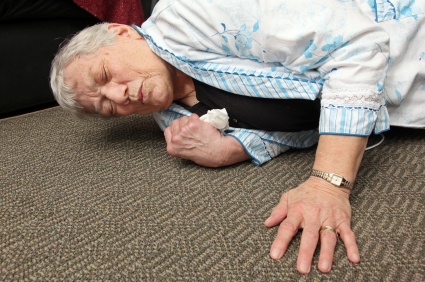Search
Nursing Homes Faces Wrongful Death Lawsuit After Patient Falls & Fractures Hip
 Falls in nursing homes are one of the biggest safety threats encountered by patients. Statistics tell use that more than one-third of all adults over age 65 fall unintentionally every year.
Falls in nursing homes are one of the biggest safety threats encountered by patients. Statistics tell use that more than one-third of all adults over age 65 fall unintentionally every year.
A sizable percentage of these falls result in severe injury or death predominately due to complications from head injury or hip fractures.
Recognizing the severity of the problem, federal regulations require nursing homes to conduct a fall-risk assessment of all newly admitted patients both at the time of their admission and conduct similar follow up on a quarterly basis or when the patients health care needs dictate.
Care plans for patients who may be at risk for falling may include precautions such as:
- Bed alarms / chair alarms to alert staff when a patient is in the process of moving about
- Use of staff to assist patients get around
- Assistive devices such as wheelchairs, walkers or canes
- Monitoring patients blood pressure to avoid any sharp swings that may put the patient at risk
- Keeping the facility de-cluttered and free environmental fall risks
When facilities fail to adhere to the care plan prescribed and patients suffer fall-related injuries they expose themselves to potential liability claims. Just recently, the family of a deceased nursing home paitnet in West Virginia filed a wrongful death lawsuit against the facility for failing to attend to the needs of a woman who was at risk for falling. The lawsuit alleges that the negligence of both Teays Valley Center and parent company Genesis Healthcare Corporation was responsible for the woman’s repeated falls, hip fracture and eventual death.
While the nexus between a fall-related hip fracture and death may appear to be little more than a coincidence, given the invasive nature of hip replacement surgeries frequently required to treat the hip fracture— they usually is indeed a correlation. As a nursing home lawyer, I frequently seek out the testimony of a treating physician to establish this relationship. Further, many jurisdictions recognize separate claims for the injuries an individual sustains as a result of a fall and those which the deceased persons estate may pursue for wrongful death.
Given the complexities involved in nursing home fall cases, it is important to carefully examine cases with an eye on both the liability aspects as well as establishing a causal relationship for ensuing damages.
Here are some interesting— or perhaps more accurately, disturbing– statistics related to falls involving seniors from the CDC:
- One out of three adults age 65 and older falls each year1,2 but less than half talk to their healthcare providers about it.
- Among older adults (those 65 or older), falls are the leading cause of injury death.
- They are also the most common cause of nonfatal injuries and hospital admissions for trauma.
- In 2008, over 19,700 older adults died from unintentional fall injuries.
- In 2009, 2.2 million nonfatal fall injuries among older adults were treated in emergency departments and more than 581,000 of these patients were hospitalized.
- In 2000, direct medical costs of falls totaled a little over $19 billion—$179 million for fatal falls and $19 billion for nonfatal fall injuries.5 This equals $28.2 billion in 2010 dollars.
For more information about West Virginia nursing home look here.
Related:
Man blames nursing home for mother’s death, The West Virginia Record, October 13, 2011
State Doesn’t Buy Claim That Patient’s Leg Spontaneously Broke
Determining The Type Of Fracture A Person Has Sustained Can Reveal If Nursing Home Abuse Is Responsible
Quality of life related to fear of falling and hip fracture in older women: a time trade off study BMJ 320 : 341 doi: 10.1136/bmj.320.7231.341 (Published 5 February 2000)
 Nursing Home Law News
Nursing Home Law News

